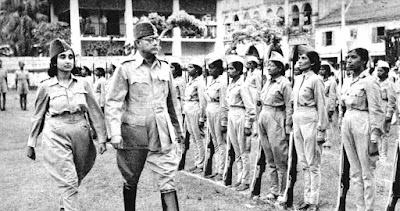http://www.bagchiblog.blogspot.com
(Continued)
 |
| The Marble Rocks, Jabalpur |
While
Mandla was only 60 miles away Balaghat was fairly long way off. I had to travel
overnight by the narrow gauge Satpura Express. It used to take around 11 hours
of swaying and bouncing on the tracks. The more it would try to pick up speed
the more it would sway and bounce. Once it almost threw me off the narrow berth
as it bounced past a rather bad portion of the tracks. The train has since been
upgraded and runs on broad gauge after track conversion.
Soon
after I joined at Jabalpur my brother was transferred from Bilaspur. My friend
Das wanted to receive him at Katni and bring him to Jabalpur in his huge Buick
that he had bought a few weeks earlier. I thought it was needless as my brother
would have to pass through Jabalpur on his way to Bhopal in any case. The car
was a gas guzzler as it would go only 15-odd kilometers in a gallon. Yes petrol
was cheap in those days yet, I thought, it would be extravagance which we
couldn’t afford. But despite my protestations Das drove the car to Katni
station and felt mighty happy with the drive in this huge limousine over roads
that were of indifferent quality.
During
my brother’s visit we went on a trip to Kanha National Park. Wildlife Tourism
had not taken off till then and hence not many tourists would be seen. We
stayed in the government-owned rest house the front verandah of which would
offer a spectacular view of the jungle or rather the grassland in front.
Sitting there with our morning cups of tea we witnessed spotted deer and
massive bisons grazing. We even saw a suckling bison that was supposed to be a
rare sight.
More
than fifty years ago tourism in the wildlife parks was yet to be properly organized.
The kind of facilities of accommodation and viewing game available now were
just not there. In Kanha they used to use baits to enable visitors to see
tigers. This was apart from the tiger sightings one would get while taking
rounds in the park. The system of baits was generally used long ago in the
Gwalior zoo. This would satisfy the children’s craving for viewing a tiger
killing the bait and also probably satiate its hunger. At Kanha we joined for
viewing the tigers in a machaan type
of construction of grass that was full of white ants. A rather weak-looking
buffalo was tied to a peg in front. As the buffalo started wailing frantically
we could hear the distant call of a tiger. The calls became louder as the tiger
approached closer making the buffalo restless and nervous. Soon two sub-adult
tigers appeared. They would make passes at the buffalo but eventually they got
it by one of its hind legs and tore off a huge chunk of meat from it. Unable to
stand anymore that blood and gore and the unearthly hopeless cry of the buffalo
I came away and out of that claustrophobic enclosure.
Another
time in Kanha, when we went in Das’s huge Buick, we saw tigers lounging under
trees at high noon. I remember a tiger giving the vehicle a cold, hard look.
Its olive green body of mammoth proportions probably appeared curious to it.
But doing Kanha in a big car had its own advantage – especially of appreciating
the beauty of the jungle, and Kanha had such beautiful jungles. Every turn
would open up a new vista that would be a massive feast for one’s eyes. That
memory has stuck with me as I could never go to Kanha again. Half a century ago
we had only Mahindra Jeeps that would run on diesel and make a racket when they
ran. Now, of course, the National Parks have specially made vehicles that are
open at the top to seat around 8 visitors and are much quieter.
An
Assistant Conservator of Forests who was a regular visitor at our house came
one evening and suggested a drive in the neighbouring Bargi forests. I do not
know whether the forest has survived after the Bargi dam was erected. At that
time it was, however, a dense jungle and tigers used to be known to be
wandering around unprotected. This forest was out of the Kanha National Park.
Das, as usual, was game for a safari. A 10 year old child of a Sikh neighbour
too joined us. Das wielded the spot light and had his American Carbine standing
next to him.
As
we drove through for miles there was no game, not even small game, and it was already past eight. Das
wanted to turn back condemning the jungle that, he said, was bare of wildlife.
It was I, remembering Jim Corbett’s experience,, suggested that maybe some big
game was around. Jim Corbett had experienced that whenever jungles were bereft
of small animals some predators were found to be around. As we went further up
Das spotted some bovines but as we went closer we realized these were not
bovines but tigers right on the middle of the road. There were three of them –
one tigress and two full grown cubs.
They all sat and looked at the approaching lights. Soon they leaped into
the jungles as the vehicle approached closer to them. We turned back as we were
not equipped to deal with three tigers with two of them full grown. The
neighbour’s child sitting next to me had a severe spell of trembling out of raw
fear.
*Photo by Bandana Bagchi
(To be continued)

























